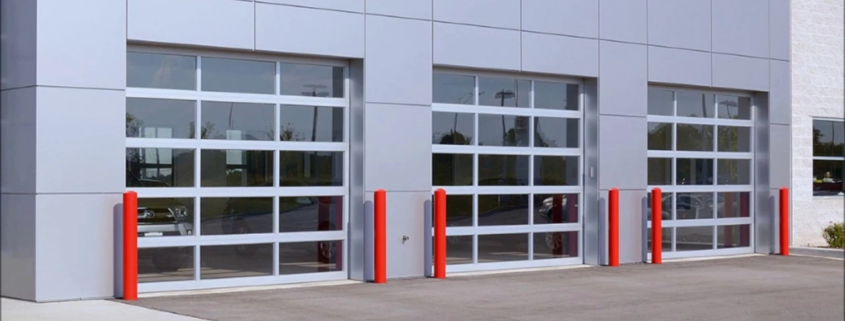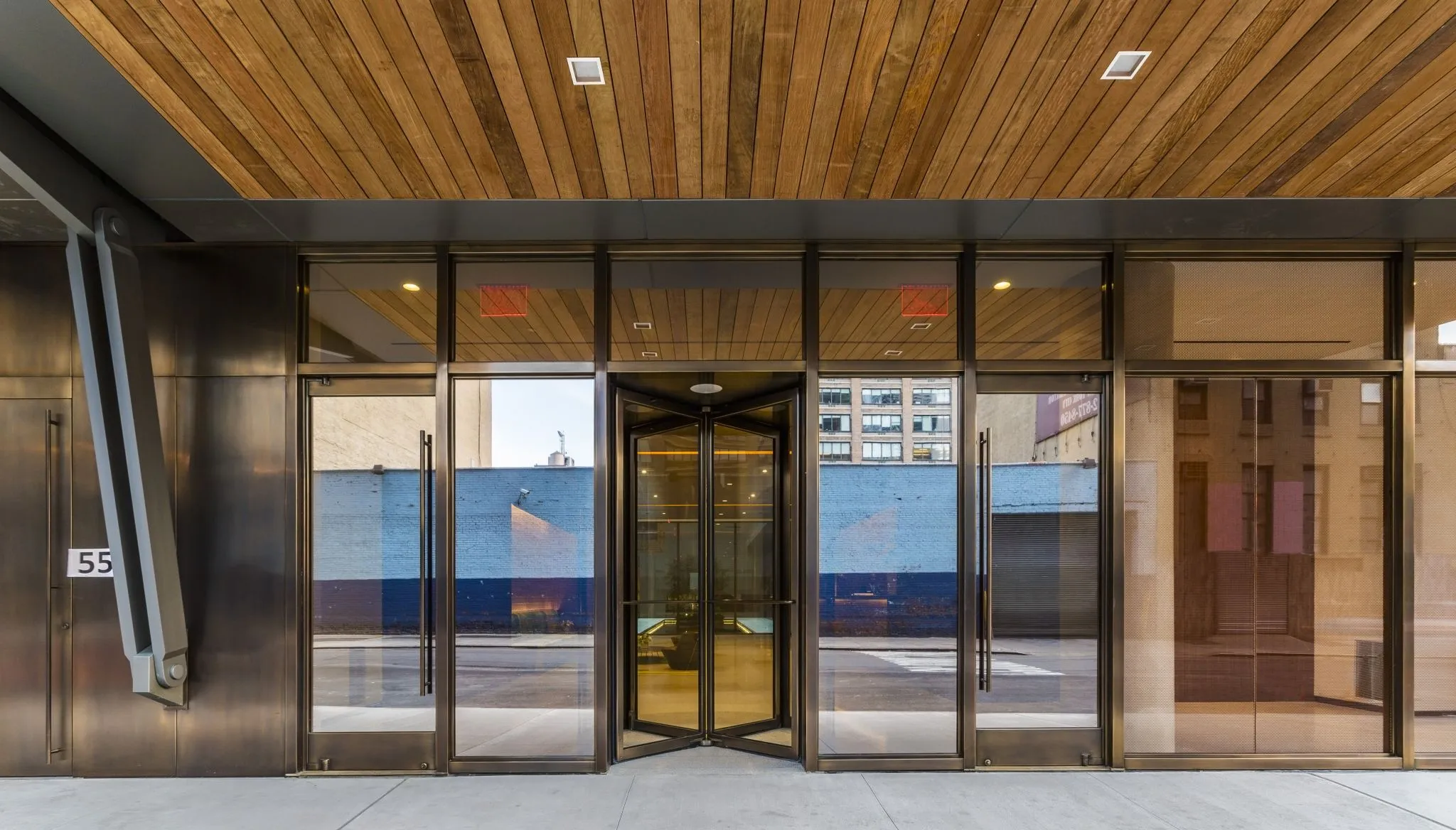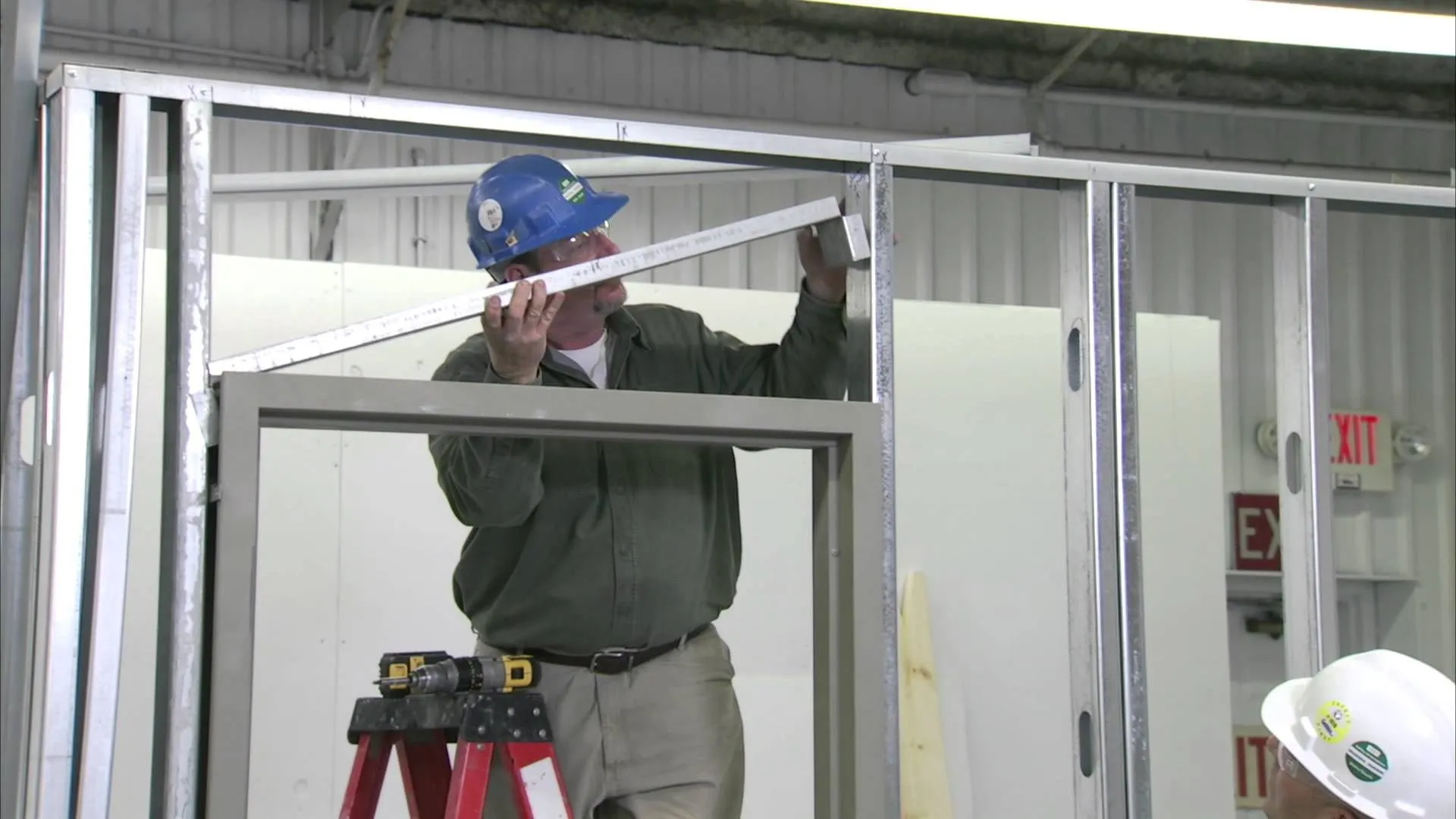5 Important Design Considerations for the Doors in Commercial Construction
In the fast-paced world of commercial construction, even the smallest design choices can shape the success of a project and doors are no exception. Every detail counts, regardless of whether you are relying on commercial construction groups, architects or facility managers, the correct door specifications are the ones that guarantee safety, compliance as well as value over the long run.
Introduction
Have you ever thought about how much influence the appropriate commercial doors may have on safety, efficiency and general success of a commercial building? Doors in commercial construction are much more than just entryways because a door is a fundamental element that secures property, aids energy-saving and can guarantee safety regulations are adhered to. Indeed, the FBI reports that 60% of commercial break-ins are forced, which highlights the necessity of the right door specifications and locking mechanisms used in any business premises.
The leading commercial construction companies have turned to sophisticated design technologies to incorporate doors into their buildings. Our background in CAD and BIM enables us to figure out the positioning of doors, the choice of material and code-compliance at CADDRAFTER with accuracy. With the Best BIM software tools, designers are able to simulate Access control systems, visualize door performance under real-world conditions and the compliance can be ensured even before the construction itself.
But security is just the beginning. The commercial doors also affect the energy consumption, durability and appearance. As an example, an insulated door was installed to save up to 20% of the heating and cooling expenses every year (US Department of Energy) and durable materials were chosen so that the doors would survive through the decades of frequent daily use. Within this blog, we are going to discuss five major design considerations every project manager, architect or contractor must be aware of to create commercial spaces that are safe, efficient, and future-forward.
Why Doors Matter in Commercial Construction?
Did you realize that even the finest commercial building could be sabotaged when the commercial doors are not good enough? The FBI states that forced entry is used in 60% of commercial building-related burglaries (FBI Crime Data Explorer). This fact in itself supports the significance of choosing the appropriate doors and being able to collaborate with a reliable commercial door supplier. Doors are not just physical lines but they present the initial line of defense of your assets, staff, and customers.
In addition to the security, commercial access doors and panels are known to influence the efficiency of a facility as well as its cost of operation. According to IBISWorld, the US commercial door market will develop at a 3.5% CAGR between 2023 and 2028, as more and more people seek doors that are both durable and energy-efficient and meet the energy requirements of the building code standards. When selecting the proper door, there are thermal benefits, cost reductions in the HVAC, and overall performance of the building.
A practical point to remember here is that when deciding on one of your commercial doors, you should always request your supplier to provide you with product specifications that will include the fire rating, STC (sound) rating and insulation levels. This makes the door not only secure the building but also helps save energy in the long term and makes the occupants comfortable.
Doors Are More Than Meets the Eye Where Surprising Facts You Didn’t Know
The majority believe that doors only consist of panels you pass through but in commercial construction, they are multi-purpose monsters. Did you ever hear that one badly defined door could cost a business thousands of dollars in wasted energy, security breaches or code violations?
- An improperly installed fire-rated door can also add 70% to the amount of fire damage (NFPA).
- The use of modern insulated doors would reduce energy bills by 15 to 20% annually (US Department of Energy).
- Approximately 60% of business burglary cases are forced doors using old or poor door locks (FBI Crime Data Explorer).
Here’s an interesting tip: some smart commercial doors now combine access control, occupancy sensors and remote monitoring to make them more than just a physical barrier. They now protect and monitor your building.
These are five things that should be considered in the design of the doors of a business building.
Design Consideration #1: Fire Rating & Compliance
Why Fire Safety Matters?
In the case of commercial doors, fire safety is of paramount importance. And amazingly, 70% of fatalities at commercial fires are those in which the doors either did not work or were not properly installed (NFPA). An effective fire-rated it will help delay the flames from spreading, offer necessary time to evacuate, and save lives. When you want to select a certified fire door manufacturer, you can be certain that your building is going to be safe and at the same time meet the regulatory expectations.
Understanding Building Codes
Standards to regulations such as NFPA 80 and the International Building Code (IBC) are not a choice. These codes define standards of fire-resistance, door hardware, and installation standards. Failure to act according to them may result in fines, insurance claims, or an expensive delay of a project. The costs of surprises will be avoided in the future by checking the compliance during the early design phase.
How BIM Ensures Compliance?
At CADDRAFTER, we use BIM technology to manage compliance efficiently. The designers can simulate the arrangement of doors, check fire ratings, and come up with proper documentation that can be given to the inspectors in accordance with the BIM level of development standards. BIM also makes sure that fire-rated doors are properly located throughout the building, which decreases the chances of making installation mistakes.
Real-World Example
Take the example of a mid-rise office development where there were a few doors that were not certified. The construction was not passed and it had to be changed immediately and which has given rise to budget overruns and schedule slippage. With the integration of fire door selection and BIM compliance checks during the initial stage, these expensive errors can be prevented, which ensures safety and compliance with regulations.
Pro Tip for Decision-Makers
Inquire of your supplier to ensure that the doors are certified to the correct fire rating.
Fire Ratings and Compliance Standards at a Glance
| Fire Rating | Duration of Fire Resistance | Common Use | Notes |
| 60 minutes | 1 hour | Small offices, corridors | Minimum rating for general commercial spaces |
| 90 minutes | 1.5 hours | Medium-sized buildings, schools | Provides added safety for higher occupancy |
| 120 minutes | 2 hours | High-rise buildings, hospitals | Required for high-risk areas to ensure maximum protection |
Tip: The standards of your fire door manufacturer should be verified and should be in accordance with the NFPA 80 and IBC standards.
Design Consideration #2: Material Selection and Durability
Choosing the Right Materials Matters
In making a choice of commercial doors, the material you choose can have a great difference in the long life span, maintenance, and performance. Strength is essential in busy locations, while appearance holds significance. The Steel Door Institute indicates that steel doors can endure for over 30 years, whereas wooden doors usually last between 15 and 20 years. That is the reason choosing a reliable commercial door supplier guarantees that the material will be appropriate for the usage and environmental factors of your building.
Comparing Door Materials
Not every door is made equal. Here’s a quick overview:
- Steel: This is highly durable, does not catch fire and needs very little maintenance that suitable for industrial and commercial rooms.
- Wood: It is warm and beautiful, but it is likely to be crooked and needs frequent repairs.
- Aluminum: It is lightweight with no corrosion and sis suitable for contemporary facades.
- Glass: Glass is ideal for providing the visual effect and natural light but needs to be tempered or laminated glass to make it safer.
Comparison of Common Commercial Door Materials
| Material | Durability | Maintenance | Best Use | Cost |
| Steel | 30+ years | Low | Industrial, high-traffic commercial spaces | Medium |
| Wood | 15–20 years | High | Offices, aesthetic-driven areas | Medium–High |
| Aluminum | 20+ years | Low | Modern facades, corrosion-prone areas | Medium |
| Glass | 15–25 years | Medium | Entryways, lobbies and natural light-focused areas | High |
Why Precision in Fabrication is Critical?
Durability does not only depend on the material but also on how doors are fabricated and installed. Using sheet metal shop drawings ensures that metal doors are cut, bent and assembled accurately, which avoids structural weakening and ensures long-term usage (link to Sheet metal shop drawings). It is through proper detailing that misalignments, gaps and hardware problems are minimized to bring even the finest materials to a shorter lifespan.
Partnering with the Right Supplier
Another way to make sure that material choices match building purpose is to work with an experienced industrial access doors and panels supplier. Commercial, industrial and public facilities can have their own requirements such as durable steel or aluminum doors can be used as they prove more effective than wood or glass in high-traffic areas. When you take into account the material durability, repairs and weathering, you will be able to keep your doors working, safe and attractive over many decades.
Pro tip: Ask your commercial door supplier to provide material certifications and maintenance specifications to make sure that they correspond to the industry standards and assure performance.
Design Consideration #3: Security and Access Control
Why Security Doors Are Critical?
Security doors are not just physical barriers in modern commercial buildings as they are acknowledged as the security measures of people, assets and sensitive information in modern-day commercial buildings. As the access control market is expected to reach 20.7 billion dollars by 2027 (MarketsandMarkets), it is obvious that companies are spending much on the implementation of smart and secure entry systems.
Regardless of a corporate office, an industrial facility, or a retail space, the appropriate doors can be installed along with efficient locking systems which can help to avoid unauthorized access and minimize security threats.
Integrating Modern Locking Systems
Selecting the suitable locking systems is as critical as the door itself. Since the mechanical locks have been replaced with keyless entry and biometrics, there is a need to have a high level of integration of custom access solutions that safeguard and make access very convenient.
At CADDRAFTER, we have dealt with CAD layouts and BIM designs, which means that before the start of the construction process, locks, card readers and smart door technologies will be in place and fully operational. This proactive method prevents errors during the installation, compliance problems, and expensive adjustments after building construction.
Designing a Smart Door Security Ecosystem
Modern commercial doors are increasingly part of a smart security ecosystem. Imagine doors linked to access control software, security cameras and building control systems. A schematic of a so-called Smart Door Security Ecosystem could be used to describe the manner in which doors, locks, sensors and alarms are interlocked and work together to safeguard the facility. This holistic methodology not only improves security but also increases the efficiency of operations as it gives real-time access to data to building managers.
Finding the Right Partner
If you are searching for commercial contractors near me, who can make a huge difference in implementing these systems. The high quality of the doors, smart locks, and careful installation are sure to give your building the safety standards with the convenience of the occupants.
Pro tip: You should never test your doors and access systems individually.
Design Consideration #4: Energy Efficiency & Insulation
Why Energy-Efficient Doors Matter?
Did you realise that a door that is not well insulated could contribute to 20% energy loss in a commercial building? One of the best investments that a facility manager or a contractor can make is to select insulated custom access solutions. They not only ensure that it is comfortable inside, but also save on energy, lower utility bills, and help achieve sustainability objectives. The US Department of Energy states that insulated doors and windows help to save 15 to 20% of the energy costs yearly and can therefore be advocated as a definite win in the long-term operation.
Enhancing Thermal Performance
The quality of seals, insulation core and materials that the door is made of determines the thermal performance. Innovative energy-efficient doors utilize enhanced cores such as polyurethane or polystyrene mixed with airtight frames to avoid the transfer of heat. In high-traffic commercial buildings, an investment in these kinds of doors will guarantee stability of temperature levels, lessen the load on HVAC systems and increase the life span of systems.
Visualizing the Savings
The financial advantages of insulated and non-insulated doors can be easily explained with the help of a chart where the annual cost savings of the doors are compared. The prospect of saving dollars per year makes the justification of the initial investment by decision-makers justifiable.
Precision Through Design
We also adopt accurate drafting methods in CADDRAFTER in describing the doors that are energy efficient. With drafting services cost data and CAD designs, we guarantee that all insulation layers, seal or frame components are properly defined to achieve a maximum thermal performance and ROI on a commercial project.
Pro tip: When you choose energy-efficient doors, the important consideration is to determine the R-value and U-factor rating to determine the insulation capacity of the door. These doors can be combined with appropriate seals and frames, which will have a significant effect on performance and will save energy costs in the long term.
Design Consideration #5: Aesthetics and Functionality
First Impressions Matter
Have you ever noticed how a building’s entrance sets the tone for the entire facility? In commercial construction, the right commercial door design does not just offer accessibility, but it also demonstrates your brand, gives a good first impression and improves the comfort of the workplace. Professionalism and attention to detail are indicated by well-designed doors, which affect the client perceptions and the satisfaction of the employees during their initial days of work.
Balancing Beauty with Practicality
Aesthetics are important but functionality is also a factor. The doors should comply with architectural guidelines of being accessible, durable and safe besides matching the overall design of the building. Experienced exterior door manufacturers know how to strike the balance between style and performance to make doors not only attractive, but also secure, energy-saving and building code compliant.
Leveraging Design Technology
Modern design software allows architects and contractors to visualize door placement and style before installation. We employ applications such as home renovation design tools at CADDRAFTER to make realistic 3D images, aiding clients and decision-makers in selecting doors that add beauty without affecting functionality. This will help minimize the number of mistakes, accelerate the approval process and also ensure that the final installation achieves both design and working objectives.
5 Key Design Considerations for Commercial Doors
| Design Consideration | Key Focus | Benefits | Recommended Metrics / Standards |
| 1. Fire Rating & Compliance | Fire resistance and building codes | Protects life and property to ensure legal compliance | NFPA 80, IBC, Fire rating 60 to 120 min |
| 2. Material Selection & Durability | Door materials (Steel, Wood, Aluminum, Glass) | Longevity, reduced maintenance and structural integrity | Steel doors: 30+ yrs, Wood: 15 to 20 yrs (Steel Door Institute) |
| 3. Security & Access Control | Locks, card readers and smart doors | Prevents unauthorized access to enhance safety | Access control systems, smart door integration and CAD/BIM planning |
| 4. Energy Efficiency & Insulation | Thermal performance and insulation | Reduces energy costs by 15 to 20% annually (DOE) to improve comfort | R-value, U-factor and insulated commercial doors |
| 5. Aesthetics & Functionality | Visual appeal, ergonomics and branding | Enhances client impressions, employee comfort and building identity | Architectural guidelines and design visualization software |
Why Doors Matter in Commercial Construction?
Additional Considerations Competitors Missed
Sustainability Matters
Modern sustainable commercial construction has been designed so that the doors are not solely functional and they also add to the LEED points and energy efficiency. The EPA reports that 39% of commercial building energy use comes from HVAC losses with doors and windows playing a critical role. Environmental impact can be minimized by selecting energy-saving, insulated doors that help promote green building certifications.
Lifecycle Cost vs Upfront Cost
Numerous competitors only look into initial expenses, although lifecycle costs can save thousands in the long term. High-performance custom access solutions or steel doors can be more expensive to purchase, but they last 30+ years, which means that they will save on replacement and maintenance costs.
Smart Technology Integration
Using IoT-connected doors and smart technology will help to monitor in real-time, access remotely, and integrate building management systems. These characteristics not only add to security but also increase energy efficiency and provide quantifiable ROI, which is generally absent in the discussion of traditional commercial construction.
Pro tip: Future-proof thinking early in your design by having sustainable, durable and smart doors means that your building will be secure, efficient, and future-oriented, which will provide you with a competitive advantage in terms of design and operational performance.
Conclusion
Elevate Your Commercial Doors with Expert Design
The choice of the commercial doors is not just a design decision, but it has implications on a building in terms of its safety, energy efficiency, security and performance. For fire-resistant doors to energy-efficient, intelligent and aesthetically pleasing design, all these are important considerations in contemporary commercial construction.
At CADDRAFTER, our team leverages BIM drafting, accurate detailing and compliance-focused design expertise to ensure every project meets regulatory standards while exceeding client expectations.
If you’re searching for commercial contractors near me or need a reliable partner to design, detail and document your commercial doors with efficiency, connect with CADDRAFTER today. Allow us to create doors that not just work and provide security, but also improve the levels of beauty and functionality of your facility.
Pro tip: Early collaboration with expert designers reduces costly changes during construction to minimize expensive modifications in the process, enforce compliance and make the most out of your business ventures.
Frequently Asked Questions (FAQs)
What are the most important considerations when selecting doors to be used in commercial construction?
The major considerations are the fire rating, the material durability, security, energy efficiency and aesthetics. Established collaboration with a reputable commercial door supplier guarantees adherence, functionality and high-performance in the long term as well as compatibility with the objectives of building design and functioning.
What is the impact of building codes on commercial building door design?
Fire, accessibility and safety standards are stipulated by building codes such as the NFPA 80 and the IBC. Doors should be in accordance with securing people and property. The implementation of BIM standards allows architects and contractors to ensure that the standards are met before construction, which prevents risks and eliminates expensive rework.
Why is fire rating important in commercial doors?
Fire doors are fire-resistant, slow the flames and smoke propagation, allowing the occupants time to escape. NFPA found 70% of commercial fire deaths to be where the doors failed. Use of certified fire doors is a choice that will guarantee safety, adherence to codes, and less damage to property.
Which door materials are best for energy efficiency in commercial construction?
Thermal performance is enhanced by insulated commercial steel, aluminum or composite doors. Their annual energy savings are up to 15 to 20% of HVAC (DOE). Effective fabrication guarantees stability, regulations and economic energy efficiencies throughout the life cycle of a building.
How do commercial doors impact security and access control?
Doors play a role in building security by locking, access control and smart technology. Proper CAD/BIM design guarantees the correct integration, and the IoT/enabled doors will enable real-time monitoring to safeguard the assets and enhance the efficiency of a particular building.





